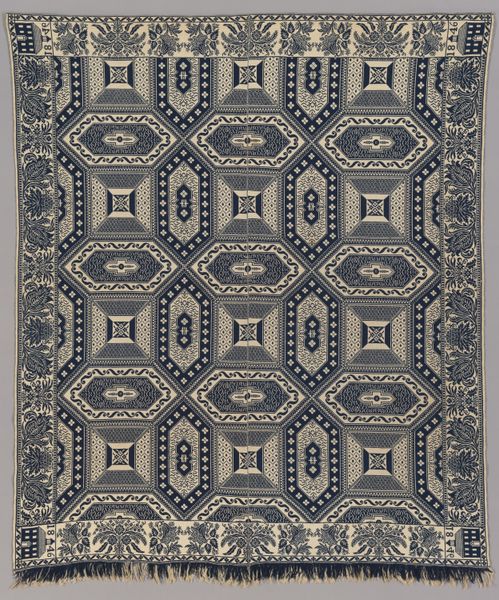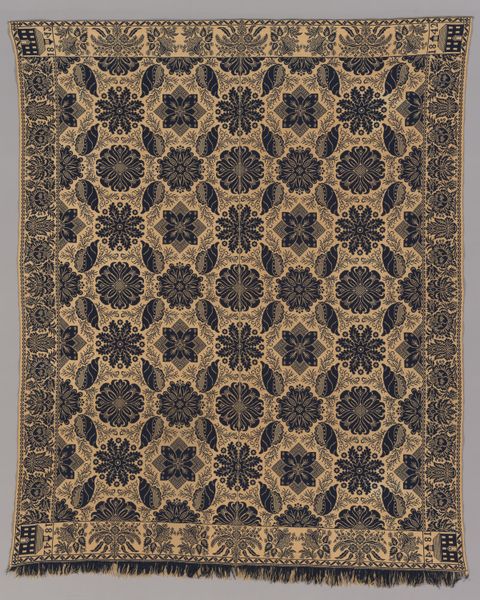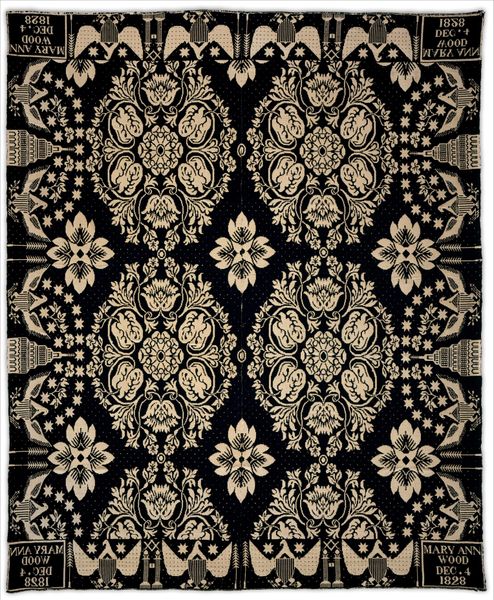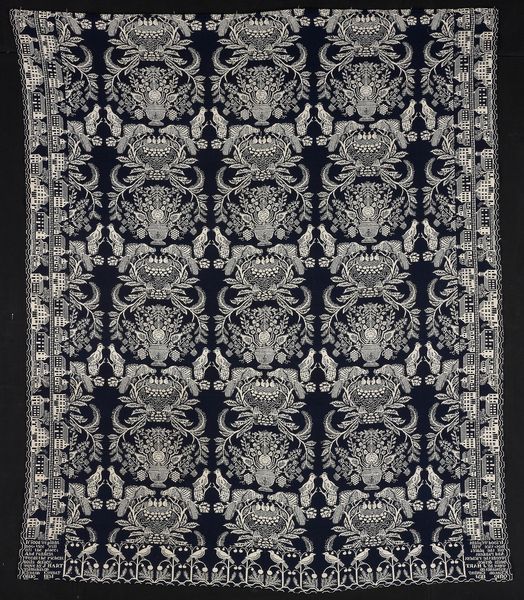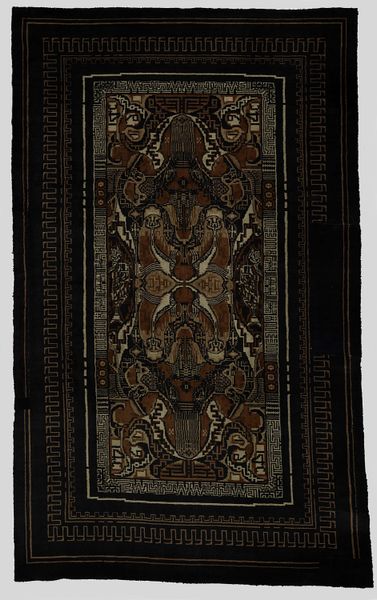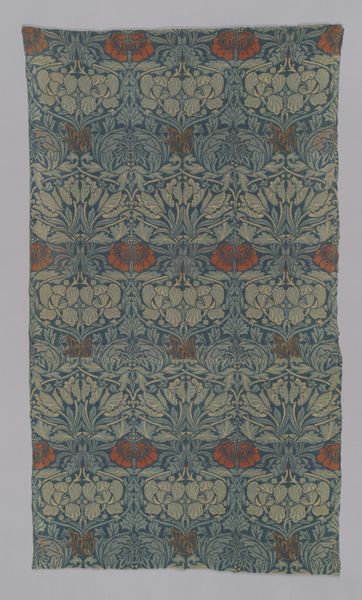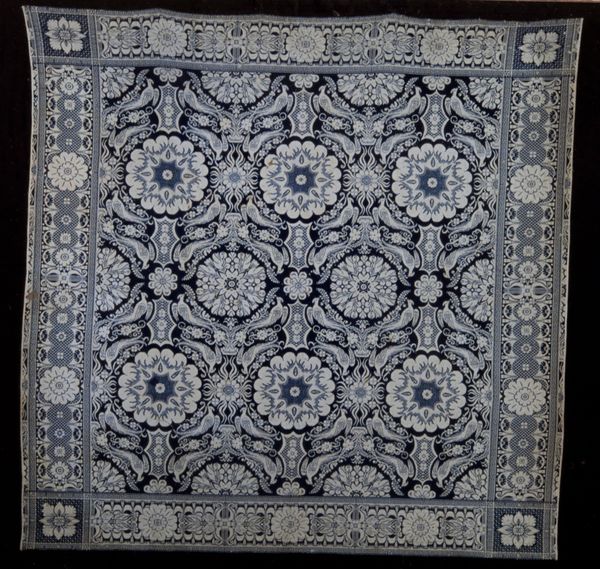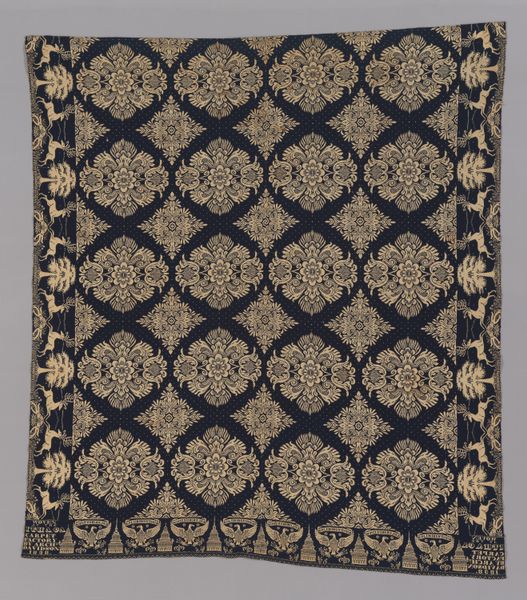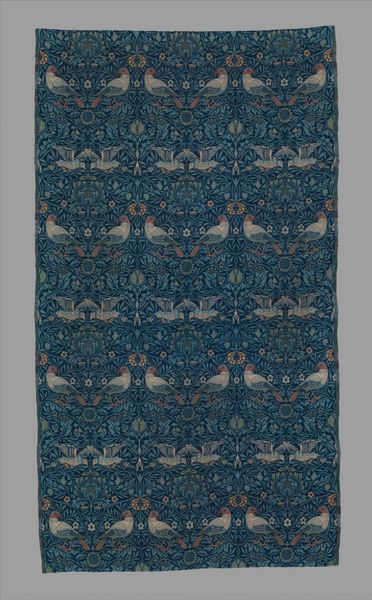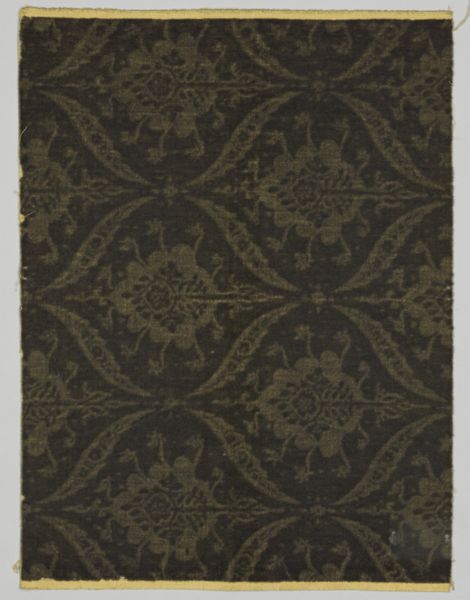
fibre-art, weaving, textile, cotton
#
fibre-art
#
weaving
#
textile
#
geometric
#
cotton
#
decorative-art
Dimensions: 91 3/4 × 71 5/8 in. (233.05 × 181.93 cm) (without fringe)
Copyright: Public Domain
This striking coverlet was crafted in 1837 by an anonymous artist, showcasing motifs rich with cultural echoes. Notice the repeated image of birds in flight. In ancient times, birds were often seen as messengers between the earthly and spiritual realms, embodying freedom, transcendence, and the soul's journey. Across cultures, from ancient Egyptian hieroglyphs depicting the soul as a bird to the Christian dove symbolizing the Holy Spirit, this symbolism persists. The bird motif takes flight once more in modern art, as we see its echoes in Picasso's doves. Here, on this coverlet, the birds might signify aspirations, a longing for spiritual connection, or even a memorial of a loved one's ascent to the heavens. The repetition of the bird motif emphasizes its importance, engaging our subconscious and stirring deep-seated emotions tied to our collective memory. The maker of this textile was likely not aware of the many iterations this symbol has gone through, but still felt compelled to weave it into their work. Like a powerful dream, this coverlet speaks a silent language understood by the soul.
Comments
minneapolisinstituteofart almost 2 years ago
⋮
This double-weave coverlet comprises two layers of interwoven cloth. Its complex weave structure required the use of a newly developed machine—the French-invented Jacquard loom, now regarded as a precursor to the modern computer. This coverlet was made in Bergen County, New Jersey, for Sarah Durie, whose name has been woven into the design. When Western European weavers emigrated to the United States, they brought design preferences with them, and pockets of regionally distinct coverlet styles soon developed. The three-leaved rose woven into the four corners of this coverlet may indicate it was made by I. Christie, who worked in the tradition of master weaver David Daniel Haring.
Join the conversation
Join millions of artists and users on Artera today and experience the ultimate creative platform.
